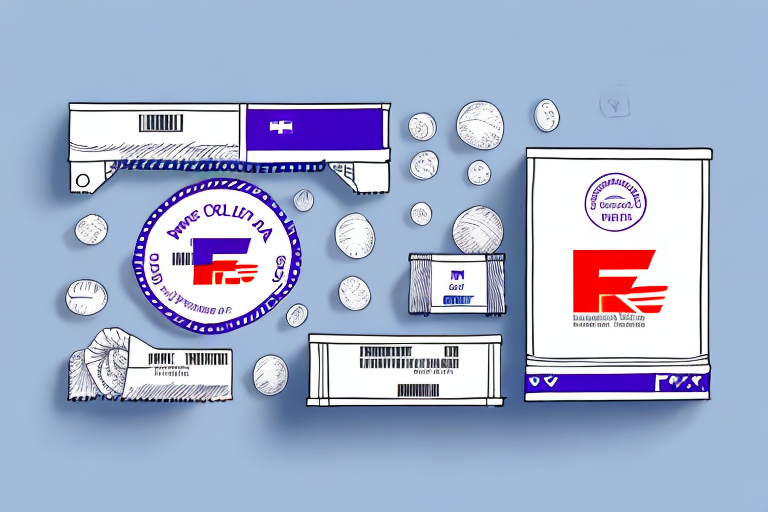Comparing FedEx and USPS Shipping Rates
When shipping packages, several factors come into play, with shipping rates being paramount. Two of the most prominent shipping carriers in the United States are FedEx and the United States Postal Service (USPS). This comprehensive analysis delves into the shipping rates offered by these carriers, assisting you in making an informed decision tailored to your specific needs.
Overview of FedEx and USPS Shipping Services
FedEx provides a diverse range of shipping services, including FedEx Ground, FedEx Express, and FedEx Freight. Each service's rates are influenced by factors such as package weight, destination, and delivery speed.
The USPS offers services like Priority Mail Express, Priority Mail, First-Class Mail, and Retail Ground. Similar to FedEx, USPS rates vary based on package specifics and desired delivery options.
One notable advantage of FedEx is its advanced tracking system, allowing real-time package tracking and updates on location and estimated delivery times. Additionally, FedEx offers a money-back guarantee if packages are not delivered on time.
Conversely, USPS provides a variety of free shipping supplies, including boxes, envelopes, and labels, making it a cost-effective choice for frequent shippers looking to save on packaging materials.
Shipping Rates Comparison: FedEx vs USPS
When comparing FedEx and USPS shipping rates, significant differences emerge. Generally, FedEx is more expensive than USPS for most shipping services. However, rates can vary based on the specific service selected, as well as the package's size and weight.
For example, according to the 2023 market analysis by Statista, FedEx holds a larger share in express shipping, while USPS dominates the ground shipping segment due to competitive pricing.
Delivery time is another crucial factor. FedEx offers expedited options like overnight and two-day shipping, which come at a premium. USPS, on the other hand, provides a range of delivery speeds, including Priority Mail and First-Class Mail, which are generally more affordable but may have longer delivery times.
Factors Affecting Shipping Rates
- Package Weight and Dimensions: Heavier and larger packages incur higher shipping costs.
- Destination Distance: Longer distances typically increase shipping rates.
- Delivery Speed: Faster delivery options cost more.
- Additional Services: Features like insurance, signature confirmation, and Saturday delivery can add to the overall cost.
- Type of Item: Shipping hazardous, fragile, or oversized items may require special handling, influencing rates.
- Seasonal Demand: During peak seasons, such as holidays, rates may increase due to higher demand.
Domestic Shipping Rates Comparison: FedEx vs USPS
For domestic shipping within the United States, both FedEx and USPS offer competitive rates. Typically, USPS is more cost-effective for smaller packages, whereas FedEx provides better rates for larger and heavier shipments.
For instance, USPS First-Class Mail is ideal for packages under one pound, offering affordable rates and reliable delivery. In contrast, FedEx Ground may be more economical for packages exceeding one pound.
Additional services can influence costs. FedEx offers Saturday delivery for an extra fee, while USPS provides free package pickup services. Both carriers offer insurance options to safeguard packages during transit, which should be factored into your shipping budget.
International Shipping Rates Comparison: FedEx vs USPS
When it comes to international shipping, FedEx generally offers faster and more reliable services compared to USPS. However, this enhanced speed and reliability come at a higher cost.
For small international packages, USPS tends to be more affordable. However, for larger and heavier items, FedEx can offer more competitive pricing despite the higher base rates.
Both carriers provide various shipping options for international destinations, such as express and economy services. It's advisable to compare rates and delivery times based on your specific requirements and consult reputable sources like UPS International Shipping Guide for additional insights.
Which is Cheaper: FedEx or USPS?
Determining whether FedEx or USPS is cheaper depends on multiple factors including package size, weight, delivery speed, and additional services required. Generally, USPS is more cost-effective for small and lightweight packages, while FedEx provides better rates for larger and heavier shipments.
Additionally, the required delivery speed plays a role. FedEx's expedited services like same-day or overnight delivery are more expensive compared to USPS's standard delivery options. However, if rapid delivery is essential, the higher cost may be justified.
Customer service quality also impacts the decision. FedEx is renowned for its reliable tracking and responsive customer service, whereas USPS has faced criticism for sluggish response times and a less intuitive website. Your specific needs and preferences will ultimately determine which carrier offers better overall value.
Which is More Reliable: FedEx or USPS?
FedEx generally has a superior reliability record compared to USPS, boasting higher on-time delivery rates and guaranteed delivery times for many services. This reliability makes FedEx a preferred choice for time-sensitive or high-value shipments.
USPS remains a reliable option, particularly for smaller and less urgent packages. However, it may be less dependable for international shipments or larger items.
The COVID-19 pandemic has affected both carriers, leading to delays and operational adjustments. As of 2023, FedEx has managed to maintain a higher service level amid disruptions, but it's advisable to check the latest service updates before choosing a carrier.
Which Offers Better Tracking: FedEx or USPS?
Both FedEx and USPS provide tracking services, but FedEx offers more detailed and real-time tracking information. Customers can monitor their packages’ progress at every stage, enhancing transparency and convenience.
USPS has improved its tracking capabilities, offering more frequent updates and delivery notifications via email or text. However, the level of detail may not match FedEx's granular tracking data.
For international shipments, FedEx's tracking system provides comprehensive information on customs clearance and delivery status, whereas USPS tracking details can vary based on the destination country's postal service.
Delivery Speed Comparison: FedEx vs USPS
Delivery speed is a critical consideration when selecting a shipping carrier. FedEx typically offers faster delivery times, especially for international shipments, with options like overnight and two-day delivery.
For domestic shipments, services such as FedEx Express provide overnight delivery, while USPS Priority Mail generally delivers within 2-3 business days. However, USPS Priority Mail Express can guarantee overnight delivery to most U.S. locations.
Additionally, FedEx usually delivers Monday through Friday, with optional Saturday delivery for an extra fee. USPS offers delivery six days a week, including Saturdays, without additional charges, providing more flexibility for recipients.
Pros and Cons of Using FedEx for Shipping
- Pros:
- Reliable and fast delivery services
- Advanced tracking system
- Wide range of shipping options
- Guaranteed delivery times
- Cons:
- Higher costs, especially for smaller packages
- Additional fees for premium services
Pros and Cons of Using USPS for Shipping
- Pros:
- Cost-effective for small and lightweight packages
- Free shipping supplies available
- Free package pickup services
- Extensive delivery network with six-day delivery
- Cons:
- Variable delivery times depending on service
- Potentially less reliable for international shipments
- Limited tracking details compared to FedEx
How to Choose Between FedEx and USPS for Your Business Needs
Selecting the right shipping carrier for your business involves evaluating several key factors:
- Package Weight and Size: Determine which carrier offers the best rates for your typical package dimensions and weights.
- Delivery Speed: Assess the urgency of deliveries and whether expedited services are necessary.
- Cost: Compare shipping rates, including additional service fees, to find the most economical option.
- Reliability: Consider the carrier’s track record for on-time deliveries and package handling.
- Tracking Options: Evaluate the level of tracking detail required for your shipments.
- Customer Service: Look into the quality of customer support provided by each carrier.
By carefully assessing these factors, businesses can select the carrier that best aligns with their operational needs and budget constraints.
Tips for Saving Money on Shipping Costs with FedEx and USPS
- Ship During Off-Peak Times: Avoid peak seasons when shipping rates are higher due to increased demand.
- Optimize Packaging: Use appropriately sized packaging to reduce weight and dimensional weight charges.
- Compare Rates: Utilize online tools to compare shipping rates between FedEx and USPS to find the best deal.
- Enroll in Business Programs: Take advantage of discounted rates offered through business shipping programs.
- Consolidate Shipments: Bundle multiple items into a single shipment to save on handling and shipping fees.
Customer Reviews and Experiences with FedEx and USPS
Customer feedback can provide valuable insights into the reliability and service quality of FedEx and USPS:
- FedEx: Many customers praise FedEx for its prompt and dependable delivery services, effective tracking system, and excellent customer support.
- USPS: Users appreciate USPS for its cost-effective rates for small packages and the convenience of free shipping supplies. However, some have reported issues with delivery delays and inconsistent tracking updates.
It's advisable to review recent customer testimonials and ratings on platforms like Trustpilot or the Better Business Bureau to gauge current service levels.
Conclusion
Both FedEx and USPS are leading shipping carriers in the United States, each offering a variety of services tailored to different needs. FedEx excels in reliability and speed, making it ideal for time-sensitive and larger shipments. USPS provides cost-effective solutions for smaller packages and offers extensive delivery coverage. By evaluating factors such as package size, delivery speed, cost, and reliability, you can choose the carrier that best fits your shipping requirements.








